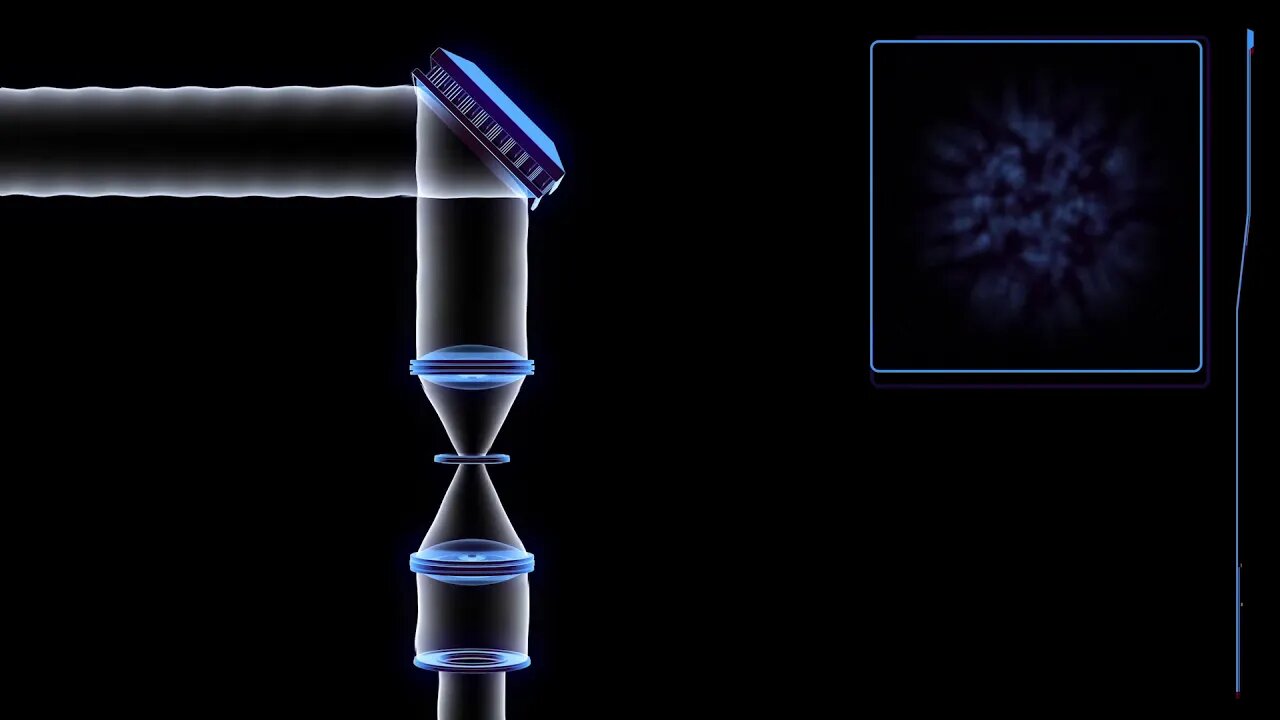Premium Only Content

🔴👀🔴 WFIRST's Coronagraph Instrument
When a new NASA space telescope opens its eyes in the mid 2020s, it will peer at the universe through some of the most sophisticated sunglasses ever designed.
This multi-layered technology, the coronagraph instrument, might more rightly be called "starglasses": a system of masks, prisms, detectors and even self-flexing mirrors built to block out the glare from distant stars -- and reveal the planets in orbit around them.
Normally, that glare is overwhelming, blotting out any chance of seeing orbiting planets. The star's photons -- particles of light -- swamp those from the planet when they hit the telescope.
WFIRST's coronagraph just completed a major milestone: a preliminary design review by NASA. The instrument has met all design, schedule and budget requirements, and can now proceed to the next phase, b uilding hardware for flight.
The WFIRST mission's coronagraph is meant to demonstrate the power of increasingly advanced technology. As it captures light directly from large, gaseous exoplanets, and from disks of dust and gas surrounding other stars, it will point the way to the future: single pixel "images" of rocky planets the size of Earth. Then the light can be spread into a rainbow spectrum, revealing which gases are present in the planet's atmosphere -- perhaps oxygen, methane, carbon dioxide, and maybe even signs of life.
The two flexible mirrors inside the coronagraph are key components. As light that has traveled tens of light-years from an exoplanet enters the telescope, thousands of actuators move like pistons, changing the shape of the mirrors in real time. The flexing of these "deformable mirrors" compensates for tiny flaws and changes in the telescope's optics.
Changes on the mirrors' surfaces are so precise they can compensate for errors smalle r than the width of a strand of DNA.
These mirrors, in tandem with high-tech "masks," another major advance, squelch the star's diffraction as well - the bending of light waves around the edges of light-blocking elements inside the coronagraph.
The result: blinding starlight is sharply dimmed, and faintly glowing, previously hidden planets appear.
The star-dimming technology also could bring the clearest-ever images of distant star systems' formative years -- when they are still swaddled in disks of dust and gas as infant planets take shape inside.
The instrument's deformable mirrors and other advanced technology -- known as "active wavefront control" -- should mean a leap of 100 to 1,000 times the capability of previous coronagraphs.
Music: "Concept of Motion" from Universe Production Music
Credit: NASA's Goddard Space Flight Center
Scott Wiessinger (USRA): Lead Producer
Francis Reddy (University of Maryland College Park): Science Writer
Neil Gehrels (NASA/GSFC): Scientist
Krystofer Kim (USRA): Lead Animator
Claire Andreoli (NASA/GSFC): Lead Public Affairs Officer
This video is public domain and along with other supporting visualizations can be downloaded from the Scientific Visualization Studio at: http://svs.gsfc.nasa.gov/13325
If you liked this video, subscribe to the NASA Goddard YouTube channel: http://www.youtube.com/NASAExplorer
Follow NASA’s Goddard Space Flight Center
· Instagram http://www.instagram.com/nasagoddard
· Twitter http://twitter.com/NASAGoddard
· Twitter http://twitter.com/NASAGoddardPix
· Facebook: http://www.facebook.com/NASA.GSFC
· Flickr http://www.flickr.com/photos/gsfc
Subscribe now for more videos from over 280 sources plus my own videos!
Subscribe to my entertainment channel too or at least peek at my other channel !!! https://www.youtube.com/channel/UCiNFsoytAuun90UzU5AuxXg
https://www.bitchute.com/channel/YsJ0PYUWx5An/
https://www.patreon.com/user?u=26453564
-
 3:39
3:39
Kurt's News
1 month agoMASSIVE Government Spending Exposed During Congressional Address
106 -
 32:55
32:55
The Connect: With Johnny Mitchell
1 day ago $4.07 earnedInside America's LARGEST Pot Trafficking Gang: How Florida Fishermen Became #1 Most Wanted Cartel
44K9 -
 2:05:15
2:05:15
Right Side Broadcasting Network
13 hours agoLIVE REPLAY: President Trump Attends UFC Fight 314 - 4/12/25
117K14 -
 2:07:42
2:07:42
BlackDiamondGunsandGear
12 hours agoWho’s in Town for This Stream?
64.6K5 -
 1:24:56
1:24:56
Quite Frankly
21 hours ago"Wild Tales: Crazy Story Hotline" | The Brothers Ep. 1
91.9K15 -
 12:37
12:37
Tundra Tactical
18 hours ago $6.30 earned🚫🚫 Biden Era GUN CONTROL Gone!!!! 🚫🚫
71.2K20 -
 1:00:09
1:00:09
Motherland Casino
10 hours ago $6.82 earnedCynthia X Mia
63K7 -
 5:32:47
5:32:47
BubbaSZN
17 hours ago🔴 LIVE - BUBBA PLAYS WARZONE SEASON 3
44.1K2 -
 2:29:26
2:29:26
Mally_Mouse
17 hours agoSaturday Shenanigans!! - Let's Play: REPO
60.4K14 -
 8:07
8:07
WhaddoYouMeme
1 day ago $5.17 earnedBut His Response Left Them Speechless!
45.9K55